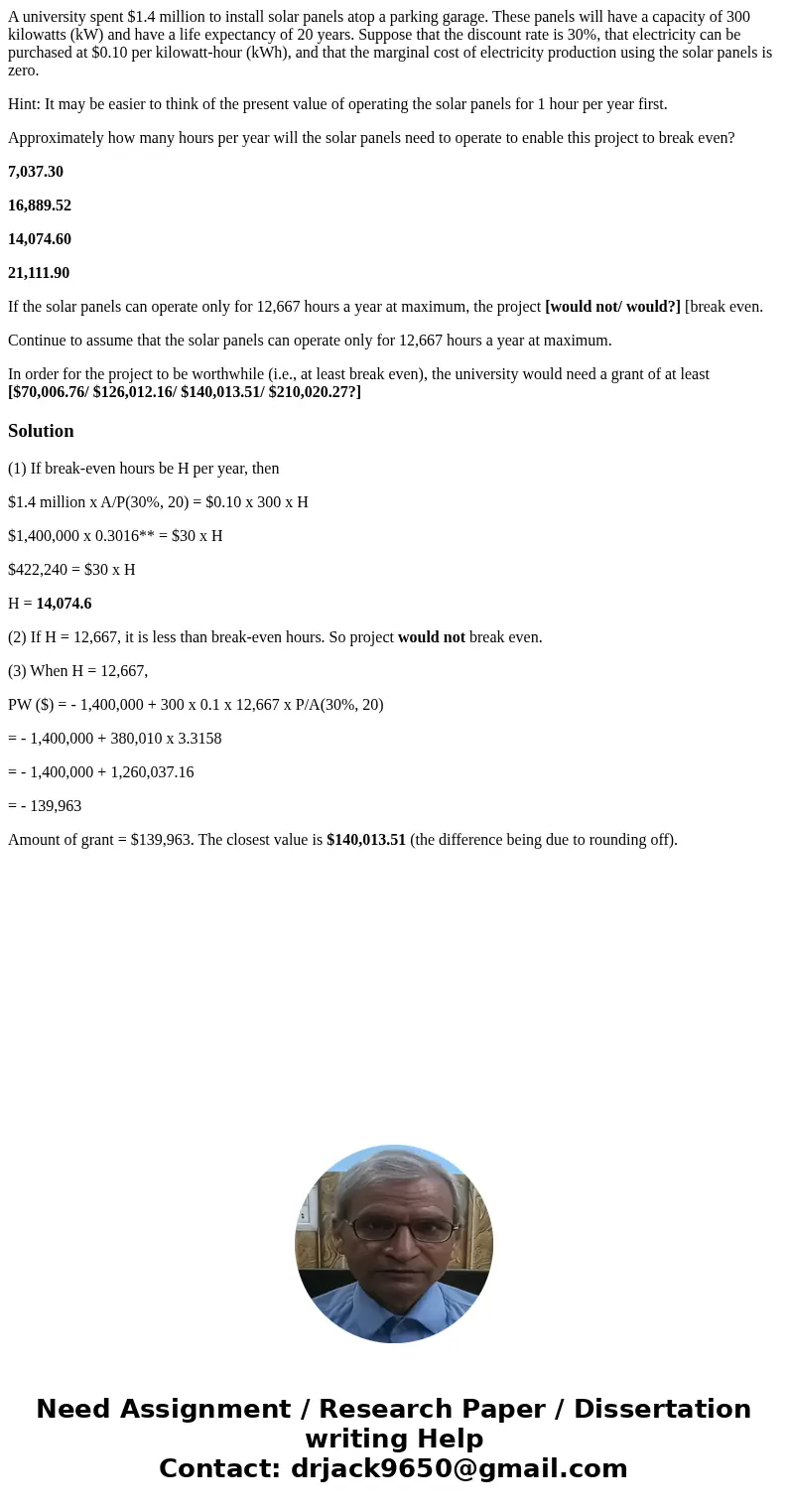A university spent 14 million to install solar panels atop a
A university spent $1.4 million to install solar panels atop a parking garage. These panels will have a capacity of 300 kilowatts (kW) and have a life expectancy of 20 years. Suppose that the discount rate is 30%, that electricity can be purchased at $0.10 per kilowatt-hour (kWh), and that the marginal cost of electricity production using the solar panels is zero.
Hint: It may be easier to think of the present value of operating the solar panels for 1 hour per year first.
Approximately how many hours per year will the solar panels need to operate to enable this project to break even?
7,037.30
16,889.52
14,074.60
21,111.90
If the solar panels can operate only for 12,667 hours a year at maximum, the project [would not/ would?] [break even.
Continue to assume that the solar panels can operate only for 12,667 hours a year at maximum.
In order for the project to be worthwhile (i.e., at least break even), the university would need a grant of at least [$70,006.76/ $126,012.16/ $140,013.51/ $210,020.27?]
Solution
(1) If break-even hours be H per year, then
$1.4 million x A/P(30%, 20) = $0.10 x 300 x H
$1,400,000 x 0.3016** = $30 x H
$422,240 = $30 x H
H = 14,074.6
(2) If H = 12,667, it is less than break-even hours. So project would not break even.
(3) When H = 12,667,
PW ($) = - 1,400,000 + 300 x 0.1 x 12,667 x P/A(30%, 20)
= - 1,400,000 + 380,010 x 3.3158
= - 1,400,000 + 1,260,037.16
= - 139,963
Amount of grant = $139,963. The closest value is $140,013.51 (the difference being due to rounding off).

 Homework Sourse
Homework Sourse